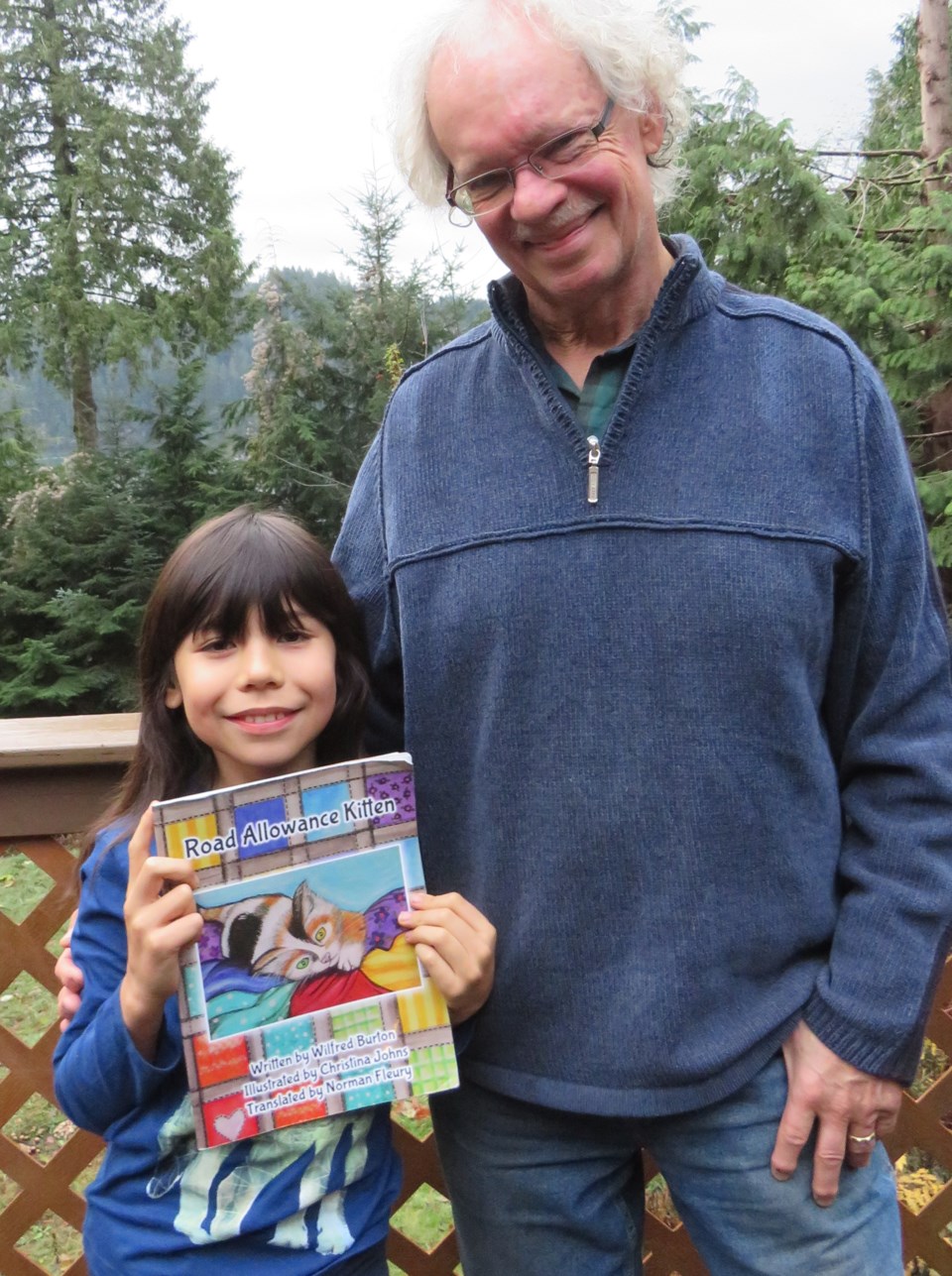Can you introduce an elementary school child to a significant but painful aspect of Canadian history through a compelling story? If the story is Road Allowance Kitten, the answer in my view, is an emphatic “yes”! While preparing this review, I also discovered that the book was shortlisted for an Indigenous Peoples’ Writing Award, and for the Saskatchewan Publishing in Education Award.
Métis educator and author Wilfred Burton’s 2015 book tells the tale of two Métis children, Rosie and Madeline. The cousins live with their families in homes that the Métis constructed from salvaged material on Crown land set aside as a road allowance near Lestock, Saskatchewan. An unusual stray kitten comes into their lives in 1949 just before the provincial government orders all the Métis families onto boxcars for a forced relocation to northern Saskatchewan. From the windows of the departing train the girls and their families are horrified to see their homes set ablaze by the authorities.
What could have been a depressing recounting of another dark period in Canada’s treatment of Métis people is balanced by the hopeful aspects of the story as the cousins use their wits and ingenuity to rescue the kitten from being left behind. In addition both Wilfred Burton’s narrative, the colourful illustrations by Christina Johns provide wonderful and positive glimpses into 1940’s Métis life in the Prairies, despite enduring conditions of poverty and racism. The story is bilingual: each page has text in English along with Norman Fleury‘s translation into Michif, the language of some Métis. There is also a CD in both languages - a valuable companion to the book.
Our eight year-old godson Cree chose this story as one of his favourite go-to books to read during an extended Prairie road trip this summer. Like many kids, he loves animal stories and he appreciated the added anticipation of not knowing what would happen to the little cat.
As we travelled, his follow-up questions about the Métis and their relocation allowed us to have conversations exploring home and homelessness, feelings of security and insecurity, and some ideas about power and powerlessness. There is also a two page section at the end of the book containing more historical facts that help inform the story, as well as additional sources of information and a Glossary. The appendices also include detailed instructions for playing “Canny Can” a cricket- like bat and ball game which was popular in that time, as well as eight verses of the French song “Allouette”, which the two girls sing as a lullaby for the kitten.
So why was it important for our family to learn about this little-known part of Canadian history from this simple story? Part of the reason, I think, is captured in this excerpt from the Final Report of the Truth & Reconciliation Commission:
Reconciliation calls for personal action. People need to get to know each other. They need to learn how to speak to, and about, each other respectfully. They need to learn how to speak knowledgeably about the history of this country. And they need to ensure that their children learn how to do so as well.
A copy of Road Allowance Kitten will be on display soon at Phoenix, with information about how to order a copy.



